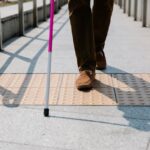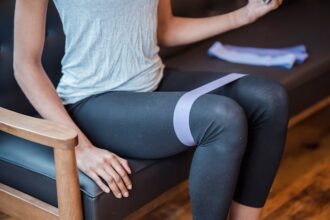Loss of bone mineral density (BMD) as individuals age significantly contributes to osteoporosis—a degradation of bone tissue. In Japan, this deterioration is a primary cause of falls among older adults, leading to fractures and extended nursing care. Addressing osteoporosis in the ageing population can reduce disease prevalence and healthcare expenditures.
Lifestyle choices made early in life, particularly during adolescence, can profoundly impact health outcomes in later years. Engaging in physical activity during these formative years contributes to the accumulation of bone mass, which peaks in the 20s and then diminishes as one age. Research indicates that increasing peak bone mass by 10% during adolescence could postpone the onset of osteoporosis by as many as 13 years. Nevertheless, the specific types of sports activities during adolescence that benefit BMD and overall bone health in later life remain unclear.
Aiming to fill this knowledge gap, a team of researchers from Juntendo University in Japan has explored how different sports played during adolescence affect bone density in later years. Their findings were published in the 14th volume of ‘Frontiers in Physiology’ on 12 October 2023. The research team included Professor Yoshifumi Tamura of the Faculty of International Liberal Arts, alongside colleagues from the Sportology Center and the Department of Metabolism & Endocrinology at the Graduate School of Medicine.
Professor Tamura elaborated on their discoveries, noting the challenges in boosting BMD once it has declined and highlighted the crucial role of maximising bone mass during youth to sustain bone health into old age. Their research provides pivotal insights into how exercise in youth can prevent osteoporosis and supports the creation of early intervention strategies.
The study surveyed 1,596 elderly individuals aged 65 to 84 from the Bunkyo Health Study in Tokyo. Assessments included physical fitness tests, vitamin D levels, and BMD measurements of the femoral neck and lumbar spine using dual-energy X-ray absorptiometry. Participants were also interviewed about their involvement in sports during adolescence, and additional data on their health and lifestyle were collected.
Findings showed that while BMD levels in the femoral neck and lumbar spine were generally normal among men, women exhibited lower values, with a significant number on osteoporosis medication. The study also highlighted disparities in conditions like diabetes and lifestyle factors such as smoking and alcohol consumption between genders. Popular sports during the participants’ youth included baseball, basketball, judo, table tennis, tennis, volleyball, and swimming.
Basketball, in particular, was associated with higher femoral BMD in older adults and women, with body weight and vitamin D levels also influencing BMD. Women who had engaged in volleyball and swimming showed higher lumbar spine BMD, though no sports were linked to lumbar spine BMD in men. Factors such as body weight, vitamin D levels, and diabetes presence were also important.
The results suggest that engaging in high-impact sports during adolescence leads to better bone density and health in later life, with benefits extending beyond athletes to the general population who participated in sports during their school years.
This underscores the significance of encouraging impactful sports activities in schools, as early sporting engagement can lay the groundwork for robust bone health throughout life. “Engaging in physical exercise during adolescence has long-term benefits on BMD, extending over fifty years into older age,” concluded Professor Tamura, emphasising the long-lasting impact of adolescent sports on health in later years.
More information: Hikaru Otsuka et al, Playing basketball and volleyball during adolescence is associated with higher bone mineral density in old age: the Bunkyo Health Study, Frontiers in Physiology. DOI: 10.3389/fphys.2023.1227639
Journal information: Frontiers in Physiology Provided by Juntendo University Research Promotion Center








